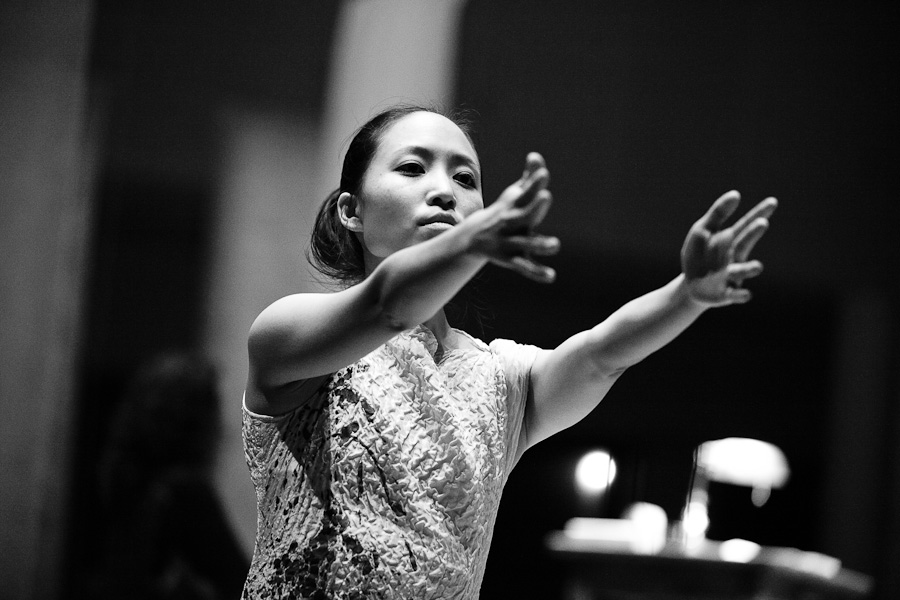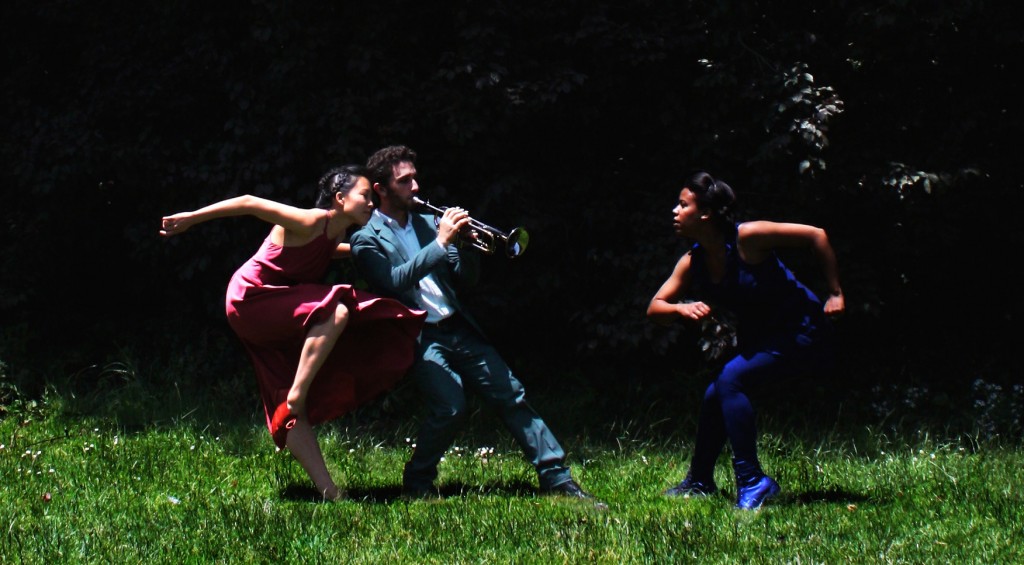In Good Company
Editorial Note: Last August, I asked eight dance artists at different points in their careers what “making it” means to them. Their responses were so poignant that I decided to make every August “making it” month and continue posing the question to various dance artists. Please join us this month in looking at what “making it” means as a dancer, artist and human. -Emmaly Wiederholt
BY MEGAN KURASHIGE
On more days than not, I go to a studio and spend several hours dancing and thinking about dancing in the company of people who I admire, respect and enjoy getting into tussles with. We make movement. We argue. We spin ideas off each other, building or excavating until something larger appears, something beautiful, foolish, painful, slapstick, honest or all of the above. Rarely is the path straight, fast or well-lit. Fumbling is common and we often find ourselves trying to do something that we don’t quite understand.
The important thing is: on a very deep level, it is not a lonely pursuit.
When I was a younger dancer, barely twenty and just barely a professional, dance was something achieved alone. There is built-in camaraderie in a ballet company, especially a small one. Dancers take class together, eat lunch together, rehearse together. I was never working by myself, but I always felt like a single modular part awaiting instructions from whoever stood at the front of the room. It was my responsibility to take things in, to try my best and then try harder. I was generous with my effort and focus, but I didn’t know how to offer anything else, so I relied on the choreographer, or director, or ballet mistress to set my course and tell me what to look for along the way. Working like that is lonely. What are you supposed to do while you wait for someone else to give you the map?
I want to emphasize that I was not powerless or overwhelmed. This is not an anecdote that equates artistic liberation with leaving ballet for work more contemporary in sensibility. Those stories irritate me almost as much as the depiction of ballet dancers in popular culture as naïve creatures, helpless princesses for modern fairytales. I was a young dancer then and now I am a dancer with ten more years of work behind her. The genre I work in has changed and any sensation of meaningful success comes not from that change, but from the discovery, through years of working with interesting and strong-willed people, that making dance can be a conversation and that you are also individually responsible for creating the kind of work that you believe in.
A few years ago, my sister, Shannon, and I started choreographing, directing, and producing our own work under the name Sharp & Fine. Working closely with someone who I trust absolutely, who has a complimentary point of view, but also emphatic differences, clarifies so many important things for me. I now have confidence in my own skill, taste and instincts. They exist, both solid and malleable, and can be taken into any working situation and offered generously without being subsumed by someone else’s identity. The effect is magnified by the fact that we collaborate with people who are intensely, uniquely intelligent. Each time we work on a project, my ideas are pushed up against theirs and the conversation makes for a more interesting understanding.
I am a working dancer in San Francisco. I perform unusual, gorgeously produced installation pieces with Liss Fain Dance. I make work for Sharp & Fine. I occasionally dabble in other projects and work an absurd number of other jobs to survive in a ridiculously expensive city, but I do survive and then some. I am paid fairly, am starting to successfully apply for grants, and am generally happy with my dancing life, both the sweet accomplishments and the moments of untangling frustration.
When I was twenty years old, if someone had told me that I would be choreographing a piece danced barefoot alongside jazz musicians, a theatrical narrative that relies on hefty sections of improvisation, I would have laughed in their face. Back then, I thought that “making it” meant being very good at something. Try your best and then try harder, empty yourself out in the pursuit of excellence, follow instructions so perfectly that you become whatever it is that someone else imagines, and you will be rewarded with better roles and a happy audience. Now, I think that “making it” means something else. It means finding the messy collection that constitutes you—the ideals, desires, predilections, questions—and taking responsibility for creating the kind of art you want to exist. It means finding the people who you want to work with, the ones who rile you up, who question your assumptions and make you reconsider them, who are so particularly and individually beautiful that interchangeability is impossible. Accomplishment is a moving target, but “making it” is something that happens when you find yourself and your comrades and go out to make good art.
A Shameless Plug:
The project mentioned above, the one with bare feet and jazz musicians, is Sharp & Fine’s Peter and the Wolf, which premieres October 23-26 at ODC Theater in San Francisco. We are abandoning the tradition of staid accompanists sitting at the edge of the stage and asking our musicians to move, to portray characters, and sometimes even to dance. The dancers we are working with are incredible, the musicians equally, though totally differently, so. It’s the hardest project we’ve ever done (we say this about all our projects and it’s always true… which makes me happy). If you’re curious you can find out more here.
We’ll also probably be looking for work-in-progress feedback sometime in late September or early October, so if you’re in SF and interested in coming to a showing, give me a holler at megan[at]sharpandfine[dot]com.
MEGAN KURASHIGE is a San Francisco based dancer and writer. She co-founded Sharp & Fine with her sister, Shannon Kurashige, in 2011. Megan has been a member of Liss Fain Dance since 2010. She previously worked with choreographers Alex Ketley (the Foundry) and Christian Burns (burnsWORK), and performed with Ballet Pacifica and Les Grands Ballets Canadiens de Montreal. She studied at the San Francisco Conservatory of Dance under the direction of Summer Lee Rhatigan. She is also a writer. Her fiction has appeared in various magazines and Unnatural Creatures, an anthology edited by Neil Gaiman and Maria Dahvana Headley. She tweets a lot @mkazoo. Learn about Sharp & Fine here: http://www.sharpandfine.com/
First photo by Eugene Borodin; Second photo by Shannon Kurashige


